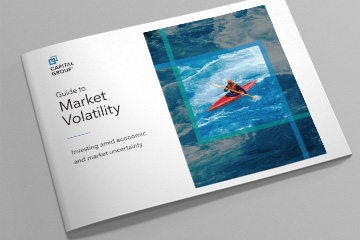Stock market jitters, triggered by tariffs and recent breakthroughs in artificial intelligence (AI) by a Chinese tech company, offer a stark reminder that even the strongest bull markets can stumble — particularly when certain stocks are priced to perfection.
The question is, does the sudden flare-up in volatility signal it’s time for investors to be more cautious? Or can the powerful market rally continue?
For Capital Group Chief Investment Officer Martin Romo, the short answer is yes. And yes.
“I think about the economy and markets today as a study in contrasts,” Romo says. While expectations for the U.S. economy remain upbeat, other economies are struggling. The impact of Trump administration tariffs and other policies add uncertainty to the picture, as do geopolitical tensions. Equity market returns have been robust and volatility low, but expectations are high.
“So in this environment, I am both constructive and cautious,” Romo continues. “I am thinking more about balancing opportunity with risk and being mindful of valuations.”
Here are four keys for investors looking to balance a constructive view of stock markets with a measure of caution.




